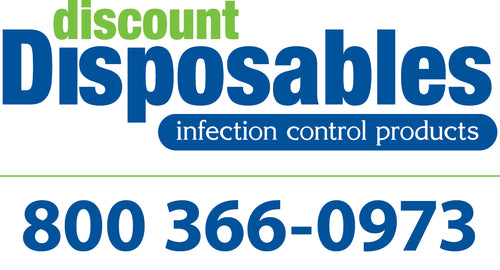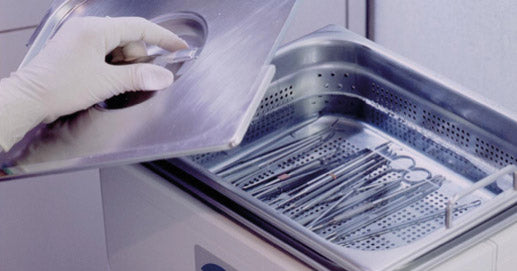The CDC categorizes patient-care items such as dental instruments and devices into critical, semicritical or noncritical depending on the risk of infection. Ideally, items that enter patient's mouths or come into contact with oral tissues should be sterilized. Sometimes this is not possible due to the device or instrument not being able to withstand the heat sterilization.
When dealing with heat-sensitive critical and semicritical instruments, these can be sterilized by immersing them in chemical solutions registered with the FDA as sterilants. When an item has been visibly contaminated with blood or other potentially infectious materials, a EPA registered high-level disinfectant should be used.
However, due to the limitations of keeping instruments sterile using liquid chemicals and because the chemical sterilants can't be verified with biological indicators, cold sterile solutions are almost never used to sterilize instruments. Instead, these disinfectants/sterilants are more often used for high-level disinfection.
Regardless on if you're using a cold sterile solution or high-level disinfectant there are many things you should keep in mind in order to ensure efficacy. Below are a couple of tips/reminders on cold sterile solutions and high-level disinfectants.
Effective and proper use of cold sterilization is dependent on many factors including:
- CDC guidelines recommend using a chemical test strips or liquid chemical monitors to determine effective concentration levels in certain chemicals such as glutaraldehyde.
- With repeated use and dilution, the frequency of testing should be based on how frequently the solution is being used.
- The physical properties of the item being sterilized. It must be relatively smooth, impervious to moisture, and be of a shape that permits all surfaces to be exposed to the cold sterile solution.
- Adequate exposure to all surfaces, both interior and exterior.
- Prior to being sterilized or high-level disinfection, the instruments should be thoroughly cleaned so that any debris is removed.
- Most cold sterile solutions come in solutions consisting of two parts that when added together form what is referred to as an "activated" solution. The shelf life of activated solutions is indicated in the instructions and such instructions should be followed closely.
- Contact time is the single most important variable distinguishing sterilization from high-level disinfection with FDA-cleared liquid cold sterile solutions.
Other factors to keep in mind when using these cold sterile solutions is the user and environmental hazard that these solutions might present. Below are general recommendations to reduce hazardous exposures to cold sterile solutions during sterilization/disinfection activities.
- Chemical-resistant gloves should always be worn when retrieving items from the solution.
- Other forms of PPE should be worn and may be required when there is the potential for skin or eye contact. PPE such as: Safety glasses, gloves and isolation gowns or lab coats.
- Designate a centralized well-ventilated processing location to reduce the potential for spills.
- Keep covers on soaking tubs tightly closed to prevent spills.
- All employers using hazardous chemicals such as glutaraldehyde, in their workplaces, must develop and implement a written hazard communication program that meets OSHA requirements
- Every practice should check with their local and state laws to see if there are special disposal requirements for the hazardous solution being used. Products such as Aldex allow you to neutralize glutaraldehyde and safely pour down the drain in most states.
Although cold sterile solutions have lately seen a smaller role within healthcare offices, when used according to label instructions and ADA & OSHA recommendations it can be a usefull tool in the reprocessing of instruments.

